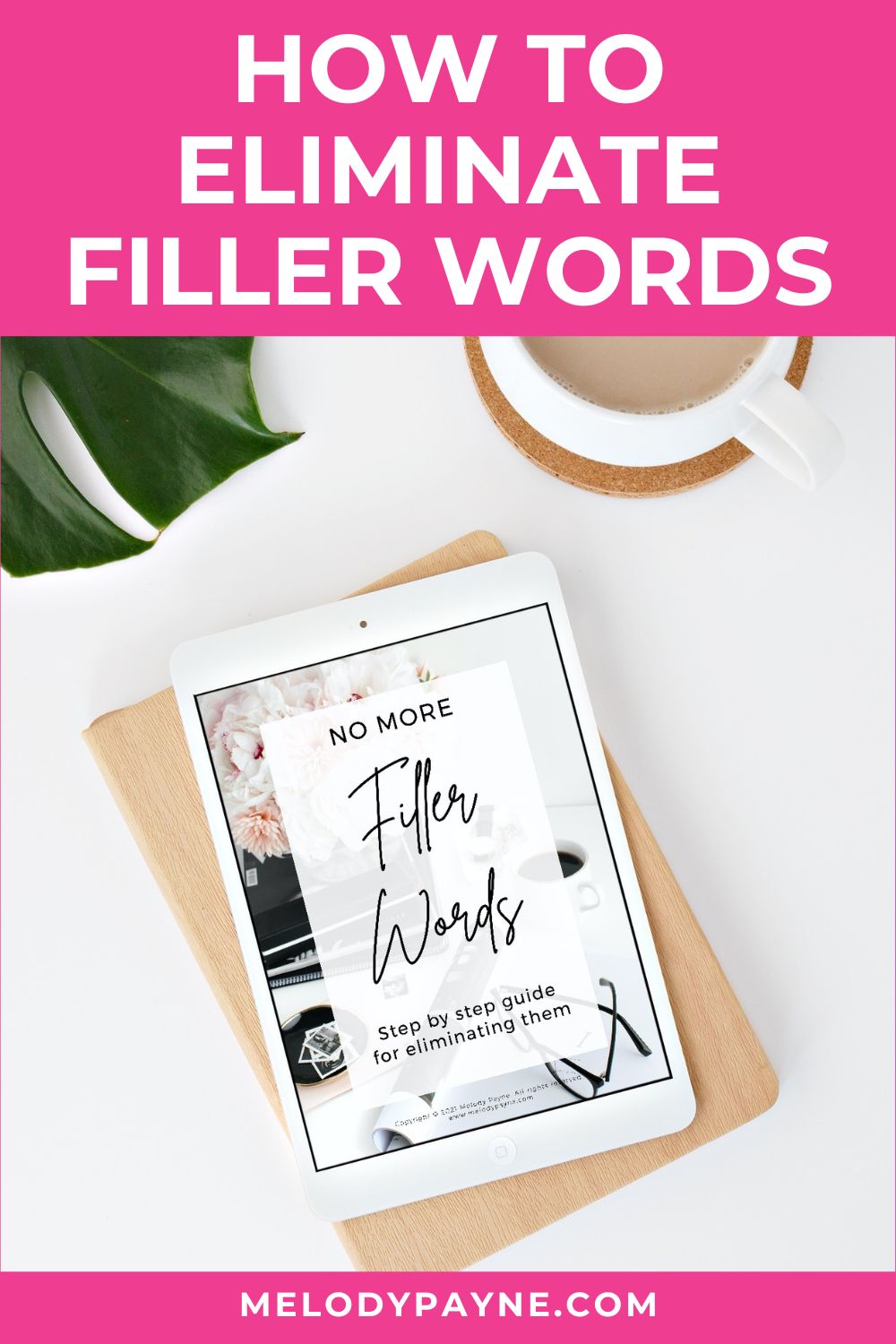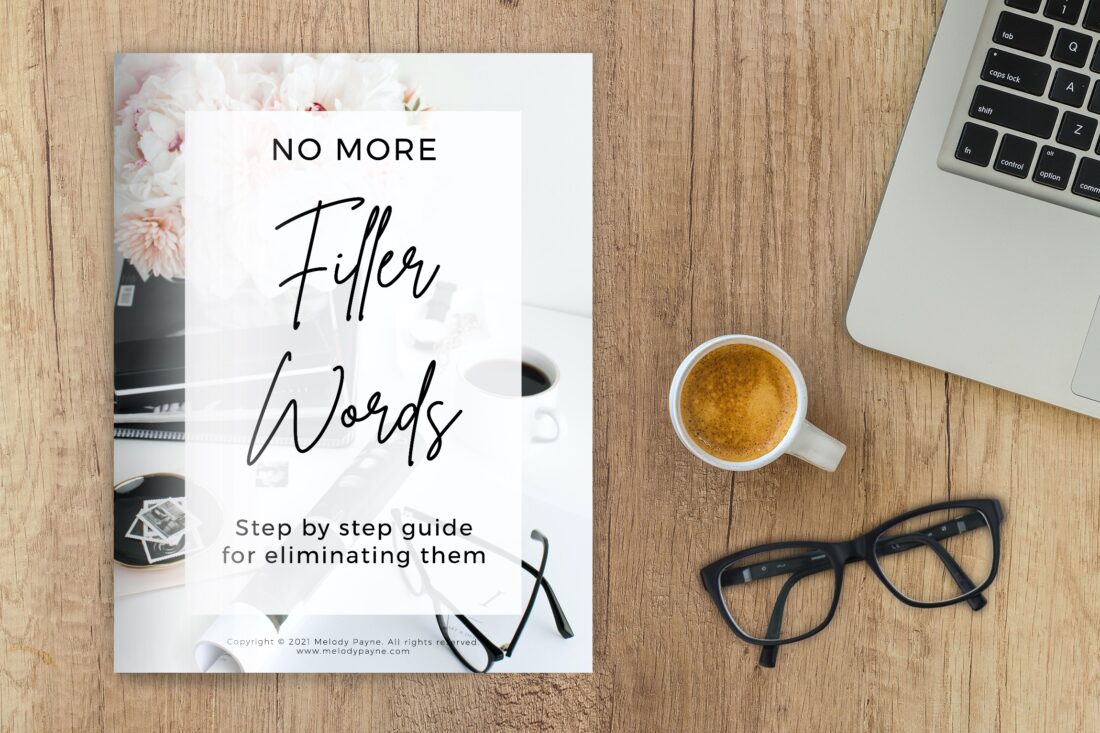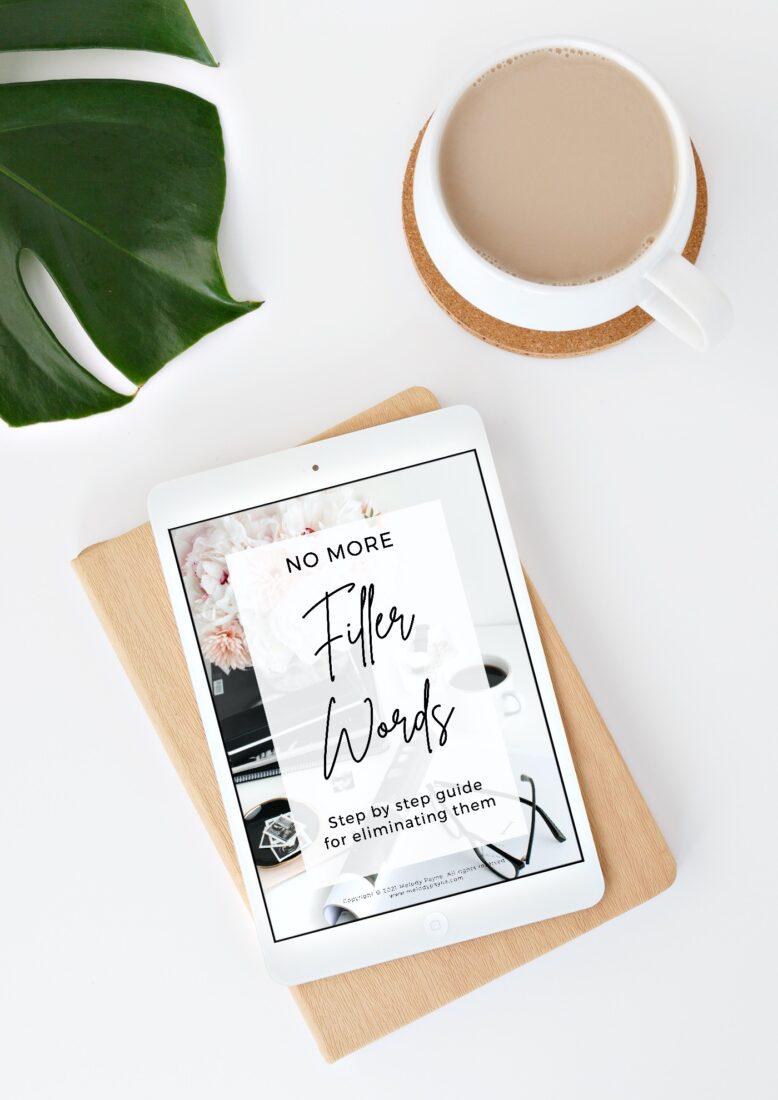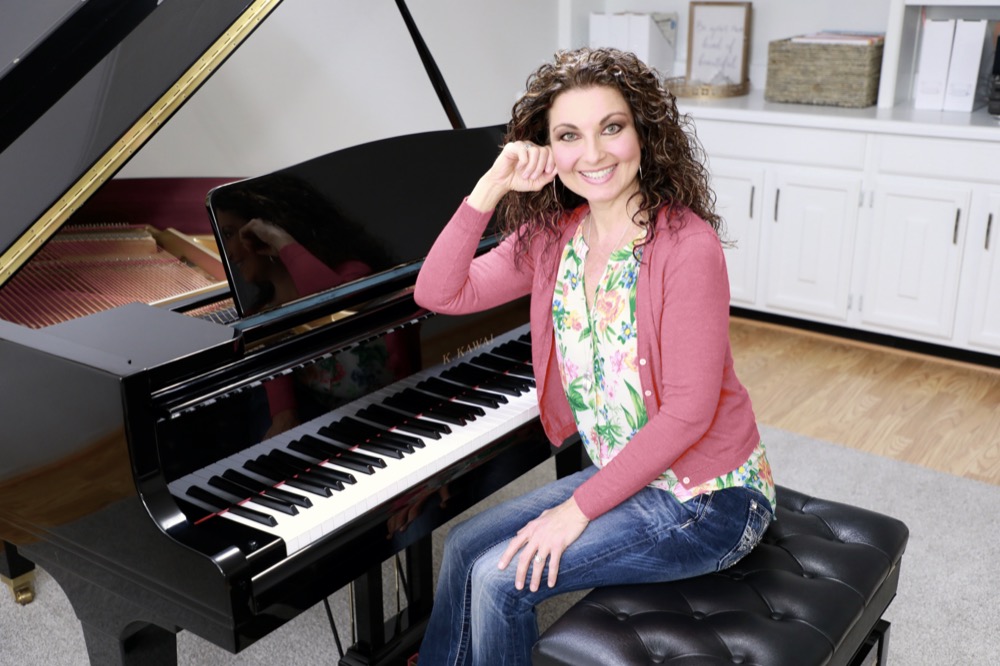Eliminate Filler Words from Your Piano Teaching Vocabulary in 6 Easy Steps
This post may contain affiliate links. If you purchase something through an affiliate link, I will receive a small commission at no cost to you. For more information, read the disclosure statement here.

Do you use filler words in piano teaching?
Well, let’s start with answering the question: “What are filler words?” Filler words are unnecessary words, also known as crutch words, in our speech. They can include words such as “um,” “OK,” “you know,” “sort of,” “now,” “so,” “well,” “like,” etc.
Why do we use filler words?
We use filler words to verbalize our hesitations. We use them because we’re thinking, or we’re not sure what to say next. We use them as a way to let people know we’re still speaking. We use them because maybe we’re not feeling confident about what we want to say.
We use the filler words to fill the quiet pauses in our speech because the silence makes us uncomfortable sometimes.
But they can make us sound nervous, preoccupied, or self-conscious, and they can distract our listener from what we’re really saying. Keep reading to see how you can eliminate them from your piano teaching vocabulary and become a clear and succinct communicator.
What is wrong with using filler words?
Think about an interview, webinar, talk, etc., you’ve attended. Did you notice any filler words? If the conversation was full of filler words, how did they make you feel as the listener?
Here’s a totally fictitious welcome statement:
“So, welcome to our recital, everyone! Um, we’re so excited you’re here, and, uh, we hope you enjoy the performance! Um, my students have worked very hard this year, and they’re like, so excited to perform for you today!”
Do you have an initial reaction to the above statement?
I get incredibly distracted by filler words, and I have trouble focusing on the topic of the webinar, course, or to whomever is speaking if the filler words are frequent like in the above fictitious welcome statement.
For me, filler words are one of the ultimate distractions in speech. I do everything I can to avoid using them when I’m teaching piano lessons, when I’m giving a Facebook Live, recording a presentation, etc.
Clarity is key
Let’s rephrase the welcome statement and remove the filler words:
Welcome to our recital, everyone! We’re so excited you’re here, and we hope you enjoy the performance! My students have worked very hard this year, and they’re so excited to perform for you today!”
How did the second statement make you feel? Calmer? More settled? More sure of what the speaker was communicating?
Can you see how much better the second welcome statement is? It’s much more “to the point”, much less distracting, and the message is much clearer overall.
Clarity is key when we’re communicating, and filler words create confusion in our speech, causing our listener to tune us out, which can be a huge problem in our piano teaching profession!

What happens when I use a filler word?
I’m so accustomed to NOT using filler words that when I slip up and DO use one, it literally startles me.
When I use a filler word, it makes me feel unprepared, “off my game,” and as if my brain has the hiccups. Sometimes it’s difficult to get myself back together, recover, and move forward with what I was saying.
It’s much easier to avoid using them in the first place! They might make us feel like we’re gracefully gathering our thoughts, but in reality, they make us sound like we’re a bit unprepared.
It’s much better to simply pause in silence while we gather our thoughts. That way, we can communicate clearly, precisely, and succinctly.
Musical metaphor
What would your favorite piece sound like if all the rests throughout the entire piece were filled with extra unnecessary notes?
- It wouldn’t sound right.
- It wouldn’t be the same piece.
- It wouldn’t be what the composer intended.
Just as rests are crucial to communicating musically, we need to become comfortable experiencing silence in our speech. Just like the notes (and rests) of our favorite piece are important, our words, and the silence in between them, are important. They help us communicate exactly what we intend to communicate.
How do we avoid using filler words?
Learning to avoid using filler words is an easy process that includes a few simple steps. It comes down to this: We become aware of our filler words and learn to stop saying them.
Here’s your assignment:
This week, I want you to complete this easy assignment.
You can download a free worksheet at the end of this article to help with the assignment.
- Video yourself teaching a piano lesson.
- If you teach online through Zoom, all you have to do is click the Record button.
- If you’re teaching in person, set up your phone or iPad to video you while you’re teaching.
- You can use the Voice Memo app to record only your audio if you prefer.
- Watch or listen to the lesson and write down each unique filler word you say (unnecessary words such as “um,” “OK,” “you know,” “sort of,” “now,” “so,” “well,” “like,” etc.).
- Count the number of times you use each unique filler word throughout the lesson.
- Add up the total number of times you say each unique word and write down the grand total number of filler words you used in that lesson.

How did it go?
- How many filler words did you use?
- Were you surprised?
I know I was, the first time I did this exercise! My main word was “OK,” and I used it at the beginning of lots of sentences like this: “OK, let’s start with your C Major scale today” or “OK, it’s time to work on recital etiquette.”
I had no idea I was using that filler word so much! It was a huge crutch in my communication, and as soon as I was aware of it, I was able to make a change.
Now my statements sound more like this: “Let’s start with your C Major scale today” or “It’s time to work on recital etiquette.”
Next steps
Now that you are aware of using filler words, and you know exactly how many you use in a single piano lesson, what is the next step towards eliminating them?
- Choose one filler word that you frequently use at the beginning of a sentence.
- Instead of saying that word, replace it with thoughtful silence.
- Before you know it, your instances of using the word will begin to decrease, and the filler word will disappear.
- Repeat this process for each filler word you need to eliminate.
- After a month or two, repeat the video assignment and see how far you’ve come!
Free download
Click the button below to download the free worksheet that will help you complete this easy assignment. Before you know it, you will eliminate all the filler words from your piano teaching vocabulary and become a more succinct and clear communicator!
Comment below and let us know how it goes!
Other blog posts to help you in piano teaching
Don't miss out!
Follow on Facebook and Instagram, join the best Facebook group for piano teachers, and subscribe to the newsletter to get helpful teaching tips, resources, and tutorials delivered straight to your inbox every week.
Melody Payne
Melody Payne
Welcome!

Hi! I’m Melody Payne, a pianist and piano teacher, educational resource author, a fun-loving wife to the most wonderful and talented hubby I could ask for, and a lifelong learner who loves to share. I want to make your life as a music teacher easier by writing and sharing helpful and relevant music teaching articles, and by creating educational resources with your very own students in mind. If you are a parent who wants to enroll your child in piano lessons, I’d love for us to get started building those skills that can give your child a lifetime of musical enjoyment!

